This blog is the third and final in a series by the Coastal San Luis Resource Conservation District on recent restoration efforts.
Located at the northern end of Montaña de Oro State Park, the Morro Dunes Natural Preserve provides specialized habitat for plants and animals alike. This area underwent a four-year restoration effort that consisted of two components, dune stabilization, and weed eradication.
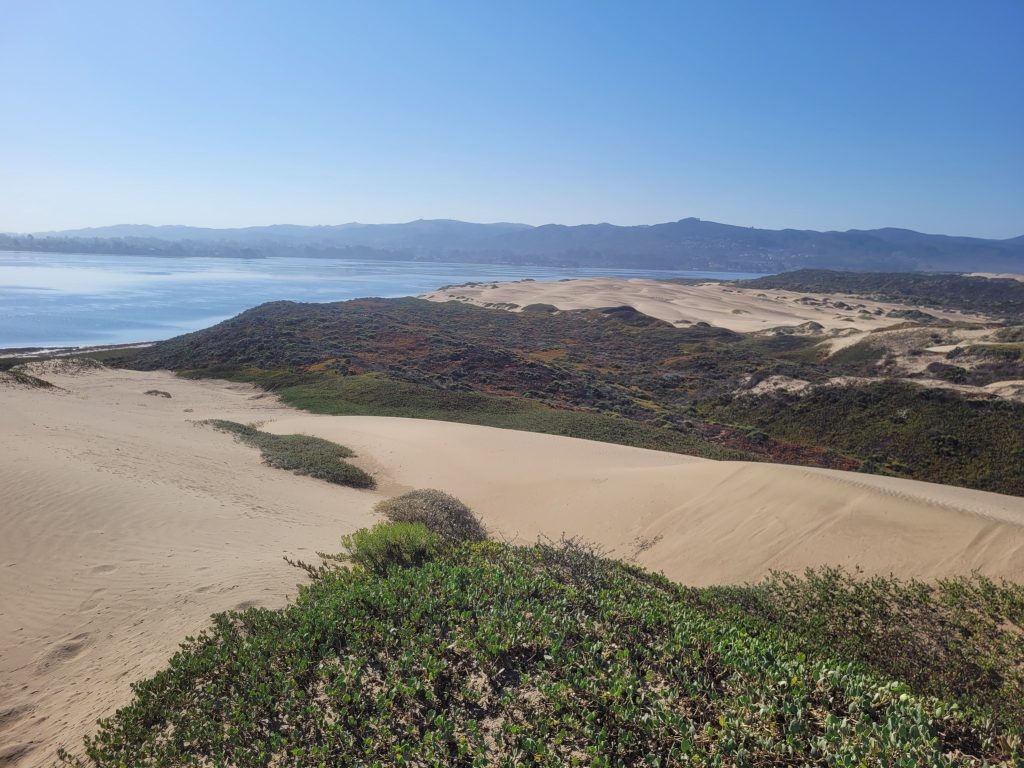
Dune Stabilization
The dune stabilization portion of this project encompassed eight acres near Shark’s Inlet at the southern end of the Sandspit on the bay-side portion of the Preserve. Stabilizing a naturally–shifting dune system is a challenge. State Parks accomplished this with 275 straw bales in blowout sections to keep sand in place. Blowouts are caused by wind moving large amounts of bare sand, leaving behind large depressions. While blowouts are a natural part of an active dune system, past human disturbance has resulted in the loss of protective vegetation that helps prevent blowouts. In the Morro Dunes Natural Preserve, blowouts began to threaten two endangered plant species, salt marsh bird’s-beak (Chloropyron maritimum ssp. maritimum) and California seablite (Suaeda californica). The straw bales were placed to prevent sand from blowing into the bay near these endangered plants to encourage the settlement of sand on the foredunes. This component of the project took 16 days to complete in 2018.
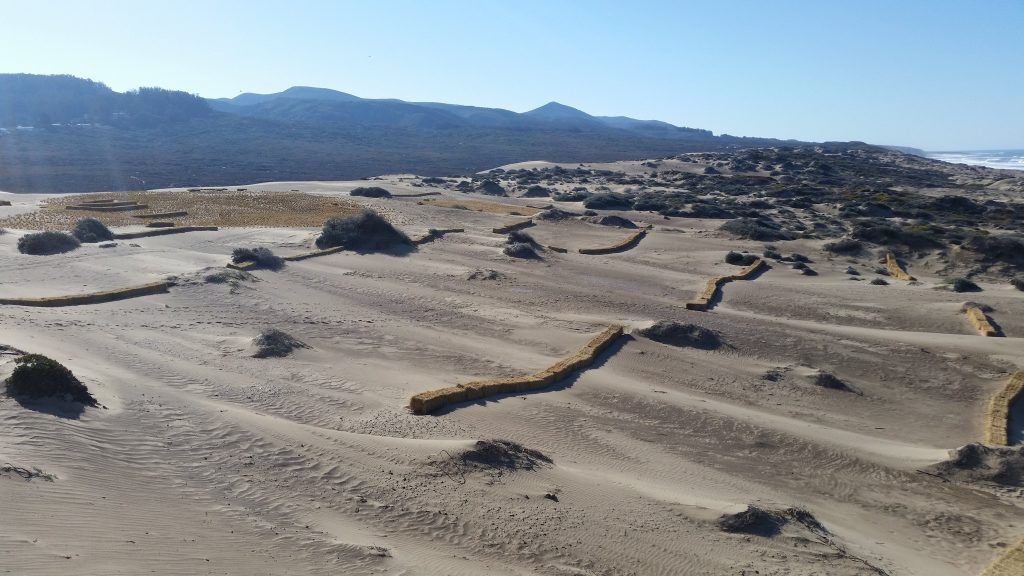
Dealing with Invasive Weeds
The second component of the project was weed eradication. Ice plant (Carpobrotus spp.) is a highly invasive species that thrives in even the most unforgiving conditions. It efficiently captures resources such as sunlight, water, and nutrients, pushing out native species. Before the restoration work, a survey indicated that high density ice plant (over 50% cover) covered over 140 acres of the 700-acre Preserve. After four years of restoration, ice plant in the dunes has been reduced dramatically to manageable levels.
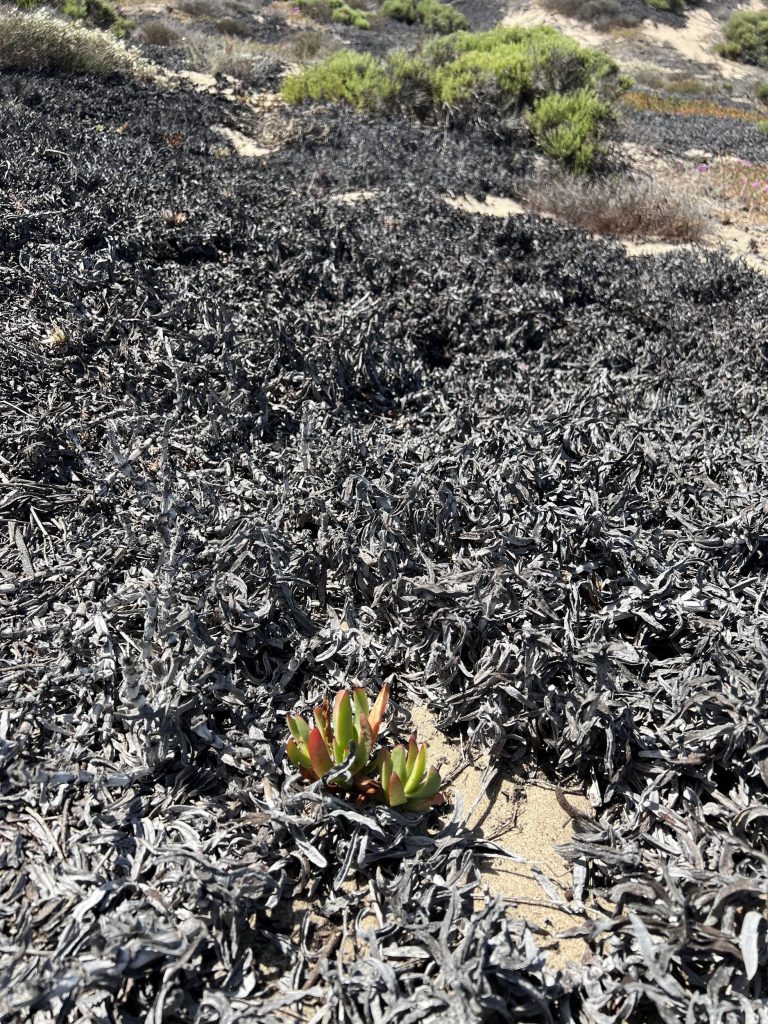
Starting in 2020, the Coastal San Luis Resource Conservation District (CSLRCD) monitored the success of the weed eradication portion of the project. The CSLRCD established survey sites and monitored them annually to track the recovery of native plants.
Exploring the Progress of Plant Communities
The surveys address the importance and impact of topography in influencing species composition and diversity. Three flat sites, three north-facing slope sites, three south-facing slope sites, and one reference site were established. Slope orientation affects how much light and heat an area receives. This information is valuable since some plants thrive in light and heat while other species prefer more moderate conditions. If a flat site is located at the base of a slope, it is usually more protected from harsh winds and more likely to accumulate moisture, potentially creating a wetland.
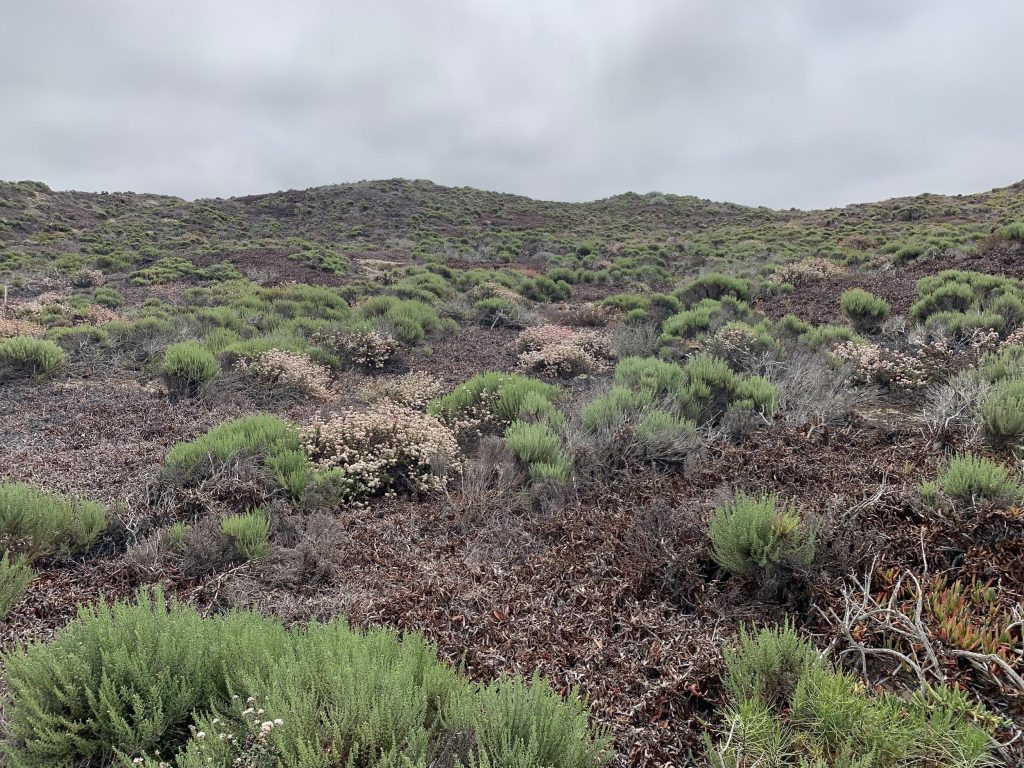
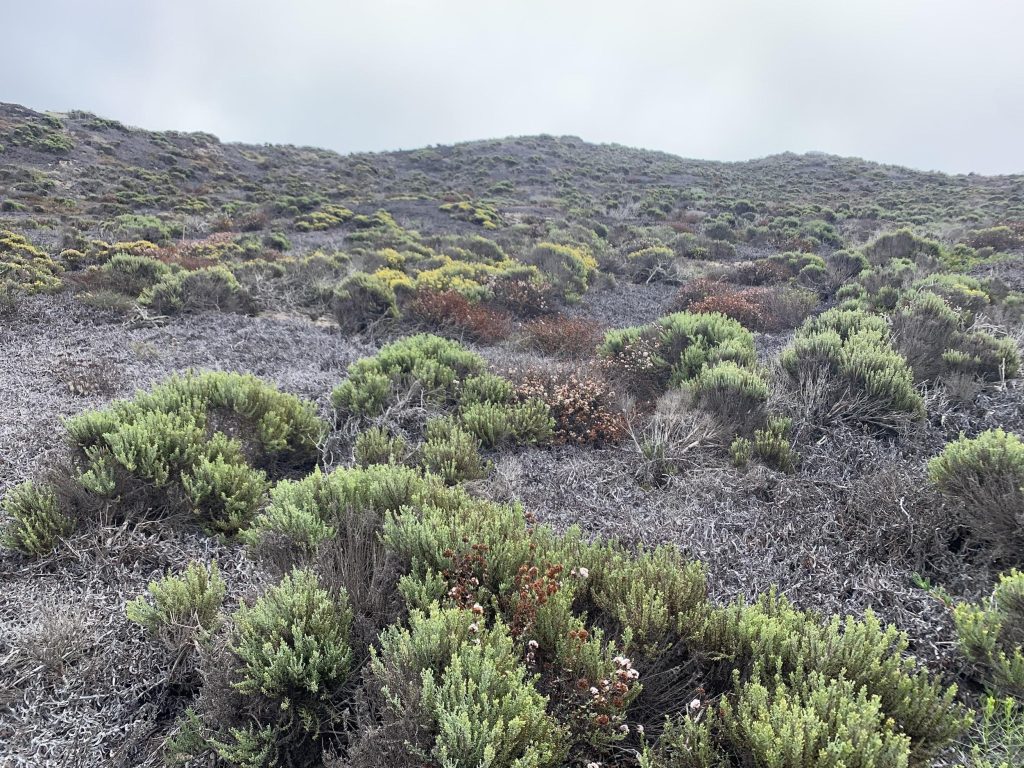
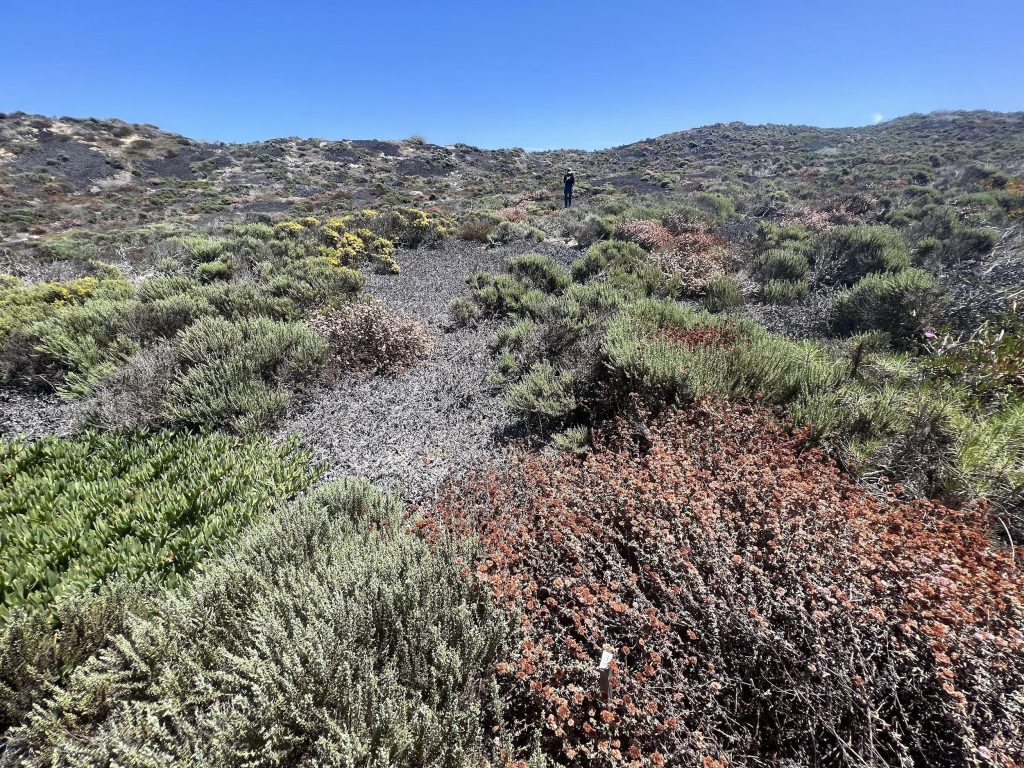
This plot had flat topography and showed a 16% increase in species richness from 2020 to 2022. Species richness is the number of species in a plot. Any increase in species richness is significant as it indicates a more stable ecosystem. The flat site saw an increase in the number of native species and individuals that matured significantly from 2020 to 2022. Photos courtesy of the CSLRCD.
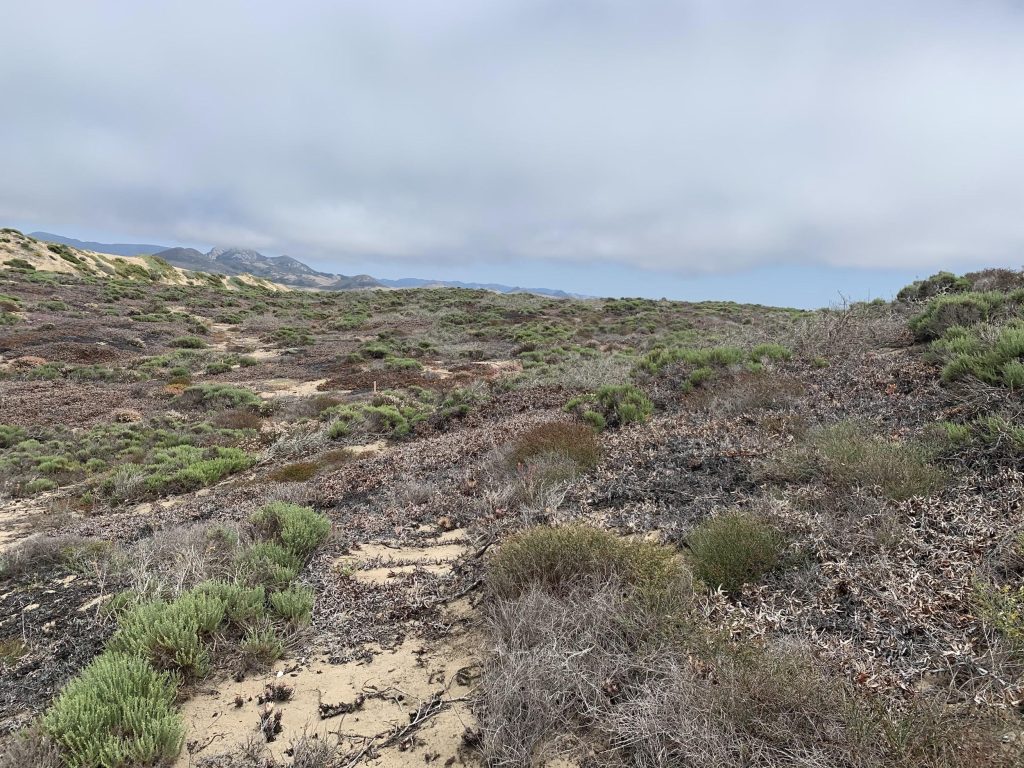
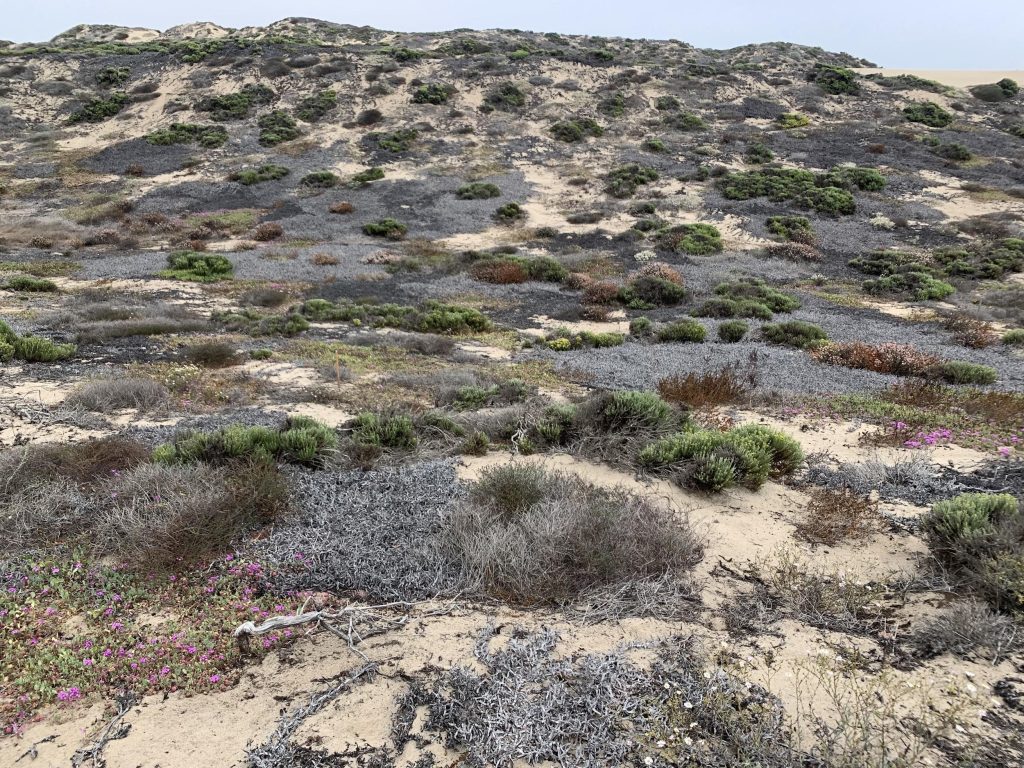
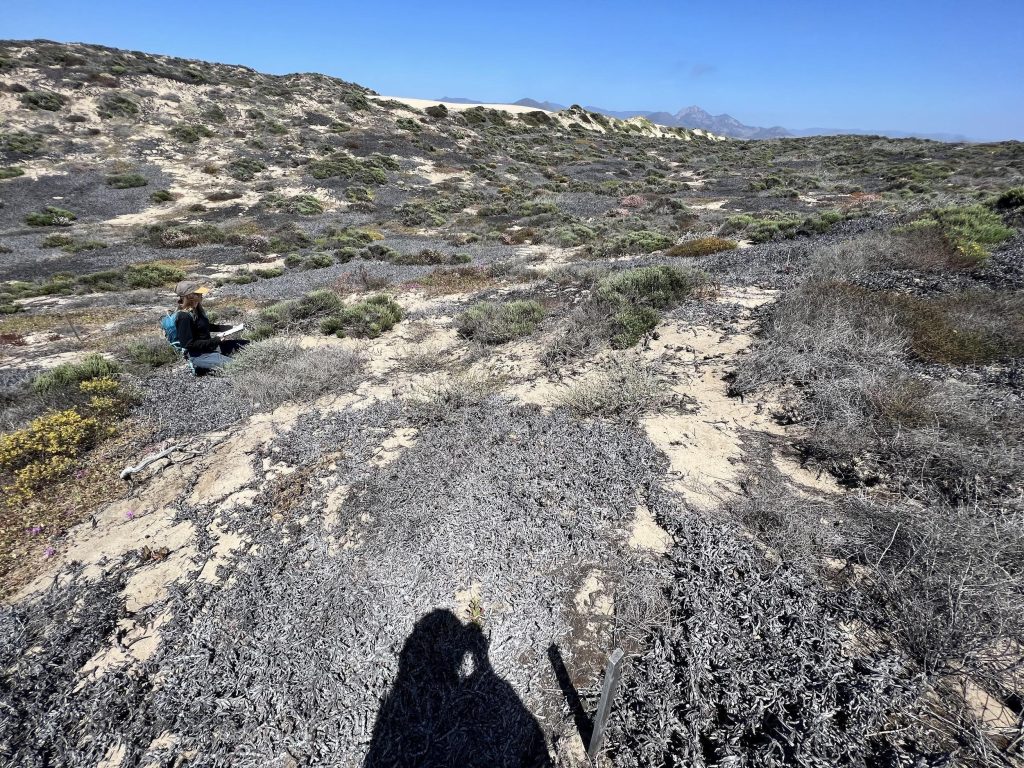
A survey of one of the north-facing sites showed a 13% increase in species richness. This is slightly less than the flat site but still indicates an increase in biodiversity from 2020 to 2022. Photos courtesy of the CSLRCD.
To evaluate the effects of ice plant eradication, each site was analyzed to understand how species richness changed following restoration.
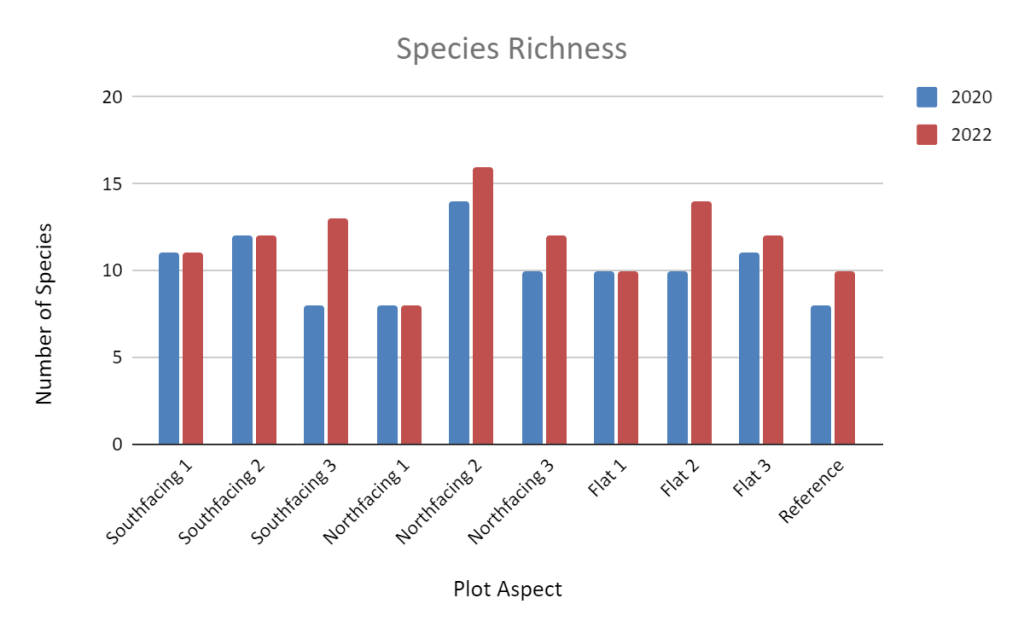
Of the ten plots surveyed, three displayed no change in species richness. Each of the remaining plots showed an increase in species richness. With the eradication of ice plant, other species rapidly recolonized the area. The reintroduced species created stability, elevated biodiversity, and helped transition the Preserve back to a more native state.
Restoring for the Future
These restoration efforts help the Morro Dunes Natural Preserve to once again support native plants and animals. This project brought together multiple agencies to help benefit the greater ecological community at the Morro Dunes Natural Preserve. While other invasive species still impact the Preserve, the management of ice plant throughout the Preserve has increased native biodiversity and improved the ecology of the sand dunes. Efforts like these help ensure the balance between natural resources and human impacts to protect these vulnerable ecosystems for future generations.
References
“Aspects.” Avalanche.org, February 1, 2018. https://avalanche.org/avalanche-encyclopedia/aspect/.
“California Native Plant Society Relevé Field Form.” Accessed September 22, 2022. https://cnps.org/wp-content/uploads/2018/03/cnps_releve_field_20070823.pdf.
Grevengoed, L. G., DeGraaf, S., Leisman, H. P., McNamara, M., & Sukaria, S. (2016, May). Interactions Between Sequential Blowouts, Their Features. and Sand Transport. Calvin University. Retrieved September 21, 2022, from https://calvin.edu/academics/departments-programs/fyres/
“Ice Plant’s Hold on the Golden Gate National Parks.” Golden Gate National Parks Conservancy, August 2, 2019. https://www.parksconservancy.org/article/ice-plant%E2%80%99s-hold-golden-gate-national-parks.
Microclimates in the garden. Royal Meteorological Society. (2017, July 28). Retrieved September 21, 2022, from https://www.rmets.org/metmatters/microclimates-garden
“Support Calflora.” Calflora. Accessed September 22, 2022. https://www.calflora.org/.
Wallert, S. Does Ecosystem Stability Depend on Biodiversity? Student Theses Faculty of Science and Engineering University of Groningen. Retrieved September 21, 2022, from https://fse.studenttheses.ub.rug.nl/11309/
Help us protect and restore the Morro Bay estuary!
- Donate to the Estuary Program today and support our work in the field, the lab, and beyond. The Estuary Program is a 501(c)3 nonprofit. We depend on funding from grants and generous donors to continue our work.
- Support us by purchasing estuary-themed gear from ESTERO. This locally owned and operated company donates 20% of proceeds from its Estuary clothing line and 100% of Estuary decal proceeds to the Estuary Program. Thank you, ESTERO!
- Purchase items from the Estuary Program’s store on Zazzle. Zazzle prints and ships your items, and the Estuary Program receives 10% of the proceeds.
Thank you for helping our beautiful, bountiful, biodiverse bay!